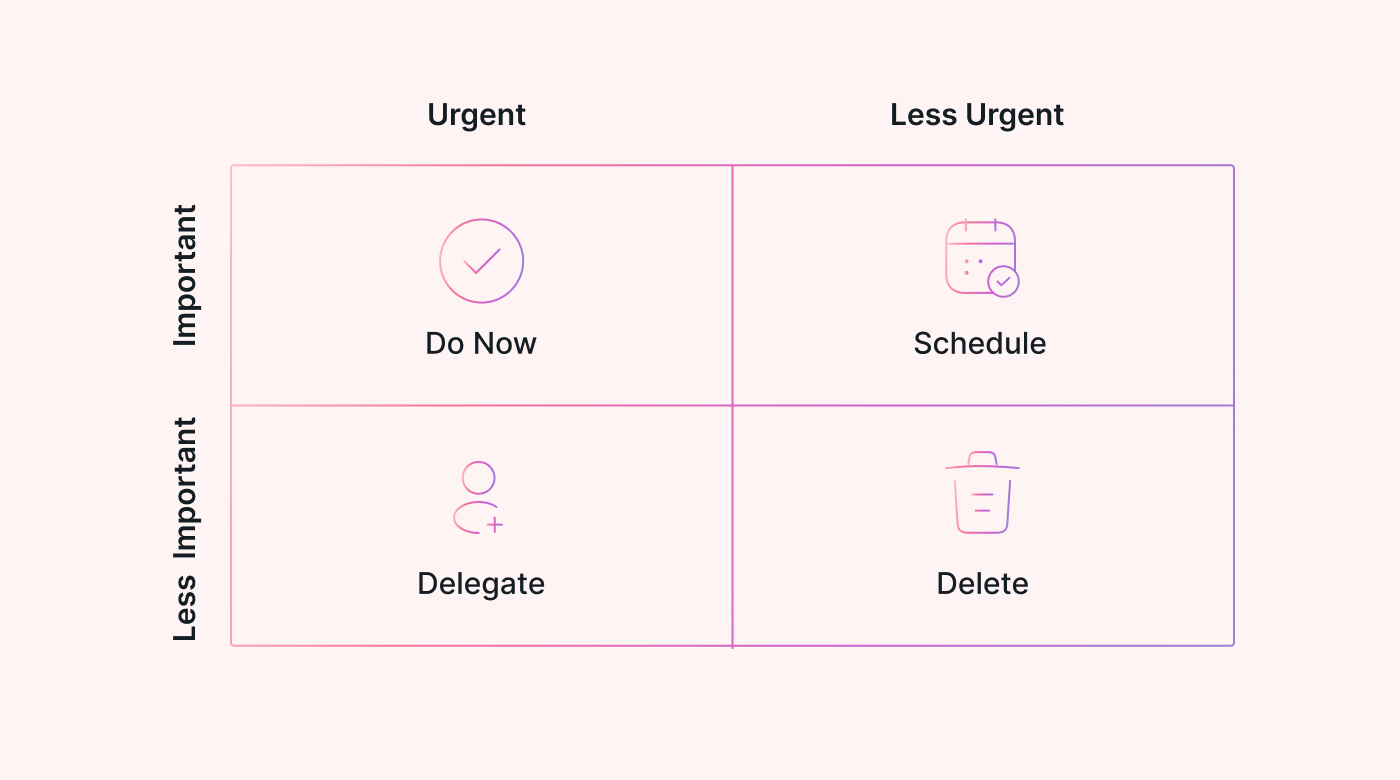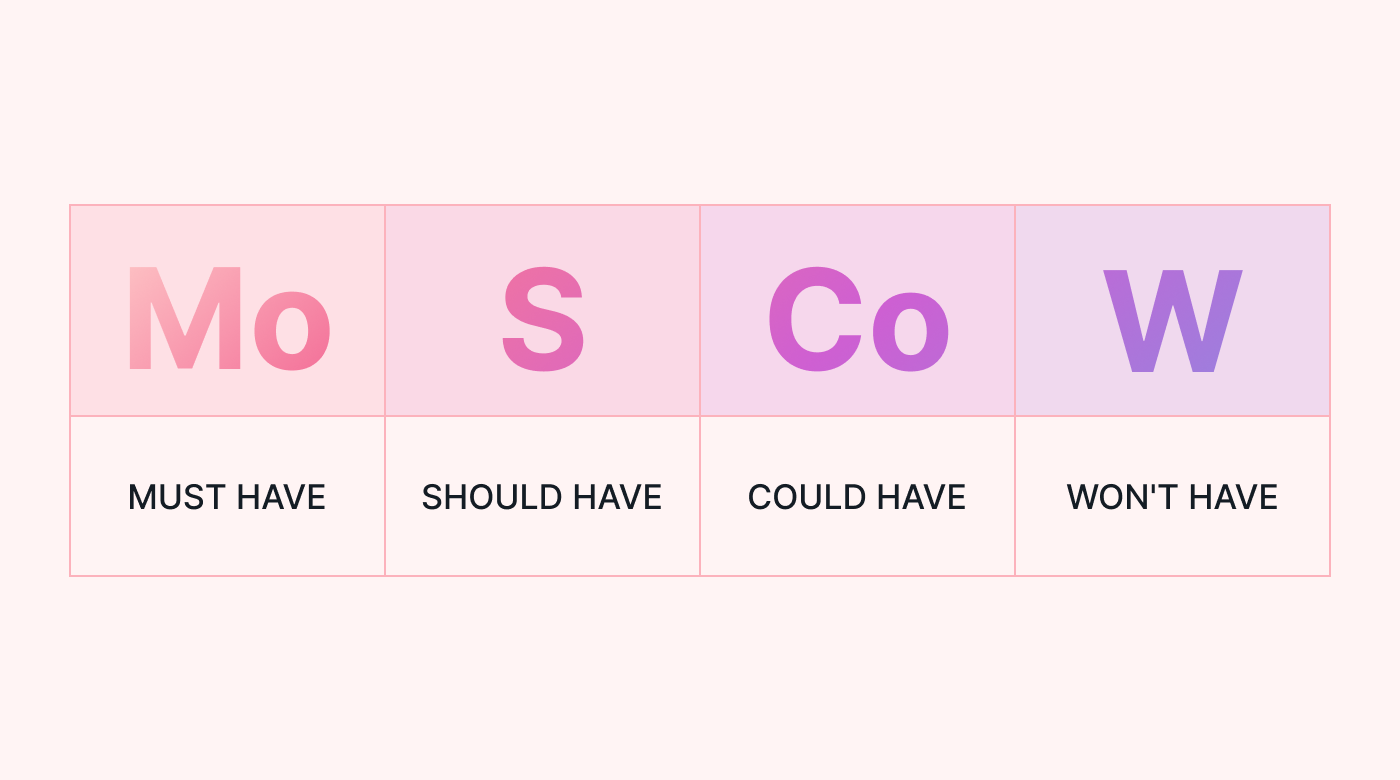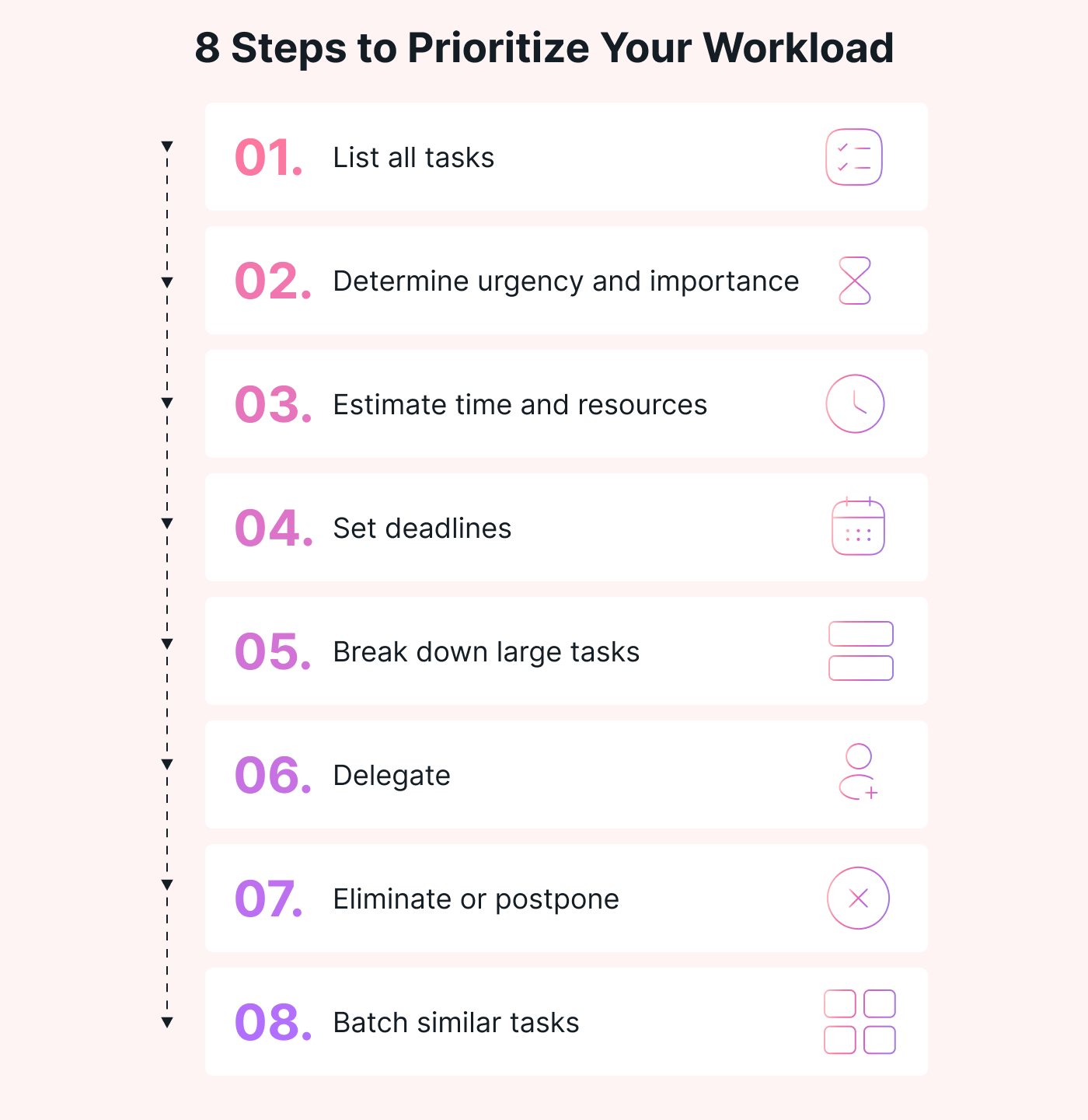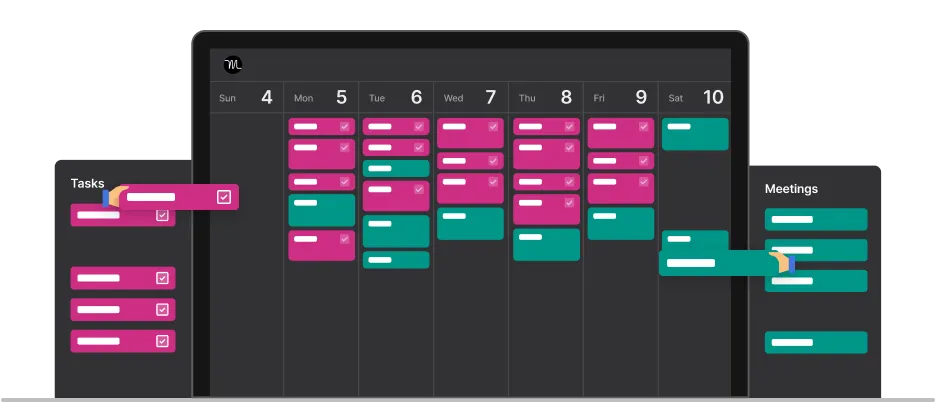Have you ever had a flood of new tasks crop up, each stamped with an “urgent” label?
This is a scenario that many professionals face. However, even if everything appears to be a high priority, the reality is you can’t tackle everything simultaneously.
That’s where workload prioritization comes in — a systematic approach to ranking tasks based on their importance and urgency. This article delves into practical tools and methods for prioritizing your workload and how you can implement them seamlessly.
Why do we struggle with workload prioritization?
Workload prioritization is a structured approach to ordering tasks based on their significance, urgency, and impact. Sounds easy, right?
Then why do so many of us find it difficult to prioritize our workload effectively?
Workplace prioritization isn’t inherent; it must be consciously developed and refined over time. Specifically, it requires a strategic approach to understanding the value and impact of different tasks.
According to a study published in the National Institutes of Health, those who don’t consciously prioritize their tasks may be less efficient at work than those who do. For instance, they might focus on less critical tasks that are easier or more enjoyable, neglecting those with a higher impact or urgency. This approach can lead to unbalanced workloads and decreased productivity.
The key to successful workload prioritization is to continually work on your ability to assess and reorder your tasks based on their urgency, importance, and potential impact.
Benefits of workload prioritization
Workload prioritization plays a crucial role in improving efficiency, productivity, and overall well-being in both your personal and professional spheres. Let’s take a closer look at some of these benefits:
Enhanced productivity
When you prioritize your workload, you ensure that the most impactful aspects of your work are completed when your energy levels are at their highest. This approach maximizes output as you deal with tasks that have the most significant effect on your goals before moving on to the less critical ones.
 |
Methodically ticking off high-priority items reduces the risk that you’ll leave important tasks unfinished, thereby increasing your overall productivity.
Less stress and burnout
Workload prioritization creates a structured plan of action, which helps reduce the chaos that often leads to stress. When you have a clear understanding of what needs to be done and in what order, you’re less likely to feel overwhelmed.
This organized approach to handling tasks can lower anxiety levels and help prevent burnout.
Better time management
Effective workload prioritization involves evaluating tasks by not just their deadlines but also their overall importance and impact. This strategy allows you to allocate your time more wisely.
By understanding which tasks are crucial and which can wait, you avoid spending too much time on the latter. This leads to a more efficient use of your available time — a result of a bigger focus on quality than quantity of work.
Clearer focus
Prioritizing tasks clarifies what needs immediate attention, which allows you to focus on only one task at a time. This reduces the mental clutter and distractions that come from juggling multiple tasks simultaneously.
Focus not only improves the outcome of your work but also enhances your ability to work quickly and efficiently.
Resource efficiency
By prioritizing tasks, managers ensure that human, physical, and financial resources are not wasted on low-priority projects. Instead, these resources are allocated in a way that maximizes output and aligns with the organization’s strategic goals.
Workload prioritization methods
Let’s dive into how eight popular workload prioritization methods can help you organize and manage your tasks.
1. Eisenhower Matrix
Also known as the Urgent-Important Matrix, the Eisenhower Matrix is particularly effective for prioritizing tasks based on their immediacy and significance, ensuring crucial deadlines are met. It divides tasks into the following four quadrants:
- Urgent and Important
- Important but Not Urgent
- Urgent but Not Important
- Neither Urgent nor Important
 |
This method compels you to think critically about the nature of your tasks.
For instance, tasks in the Urgent and Important quadrant should be done immediately, while those that are deemed Important but Not Urgent can be scheduled for later. Tasks that are Urgent but Not Important can be delegated, and those that are Neither Urgent Nor Important should be dropped.
2. ABCD Method
The ABCD Method is a prioritization technique that involves assigning a letter grade from A to D to each task based on its importance. “A” tasks are critical and must be handled immediately, “B” tasks are important but not as urgent, “C” tasks are nice to do but not necessary, and “D” tasks can be delegated.
This method helps in quickly identifying which tasks require immediate attention and which can be postponed or handed off to others, improving time management and ensuring focus on high-priority activities.
3. Ivy Lee Method
The Ivy Lee Method is a century-old strategy that focuses on simplicity. At the end of each day, you list the six most important tasks for the next day and rank them in order of importance. The next day, you begin with the most important task and proceed sequentially.
The Ivy Lee Method encourages deep focus on a few important tasks rather than multitasking. It also helps you preserve your resources (like time and mental energy) for your priorities. It’s beneficial due to its simplicity and the emphasis it places on finishing one task before moving on to the next.
4. Pareto Principle
The Pareto Principle, commonly known as the 80/20 Rule, is the idea that 80% of results come from 20% of efforts.
In workload management, this principle suggests that most of your results will come from several of your most important tasks. Identifying and prioritizing these tasks helps ensure that you are focusing on the activities that have the most significant impact on your goals, improving your overall productivity and effectiveness.
5. 4Ds of Time Management
The 4Ds of Time Management is a method that categorizes tasks into four actions: Do, Defer, Delegate, and Delete. “Do” tasks are those that are urgent and important, “Defer” tasks are important but not urgent and can be scheduled for a later time, “Delegate” tasks can be handed off to others, and “Delete” tasks are neither urgent nor important and can be eliminated.
This time management technique helps in making quick decisions about where to allocate your time and efforts, ensuring a balanced approach to your task management.
6. MoSCoW Method
The MoSCoW Method is a prioritization technique often used in project management. It categorizes tasks into “Must have,” “Should have,” “Could have,” and “Won’t have” categories. “Must haves” are non-negotiable and critical for success, “Should haves” are important but not vital, “Could haves” are desirable but not necessary, and “Won’t haves” can be put on hold or dropped entirely.
 |
The MoSCoW prioritization framework is beneficial for projects with limited resources, as it helps to allocate those resources effectively and ensures that critical components are not overlooked.
8 steps to prioritize your workload
Ready to take control of your tasks? Follow these steps to master workload prioritization:
 |
1. Make a list of tasks
Begin by jotting down each task or responsibility on your plate. This step is crucial for visualizing your entire workload and making sure no task is forgotten. It’s the starting point for a well-organized approach to tackling your responsibilities.
2. Determine urgency and importance
Assess each task’s level of urgency and importance. This evaluation guides your prioritization strategy. Choose frameworks like the Eisenhower Matrix or the ABCD Method to categorize your tasks.
3. Estimate time and resources
Evaluate how much time each task will require and identify the resources you’ll need. Knowing these things can aid in realistic and effective time management.
4. Set deadlines
Assign a deadline to every task, even if it doesn’t have an “official” one. Deadlines create necessary time constraints, which can boost focus and reduce the tendency to procrastinate. This step also ensures that tasks are completed within a specific time frame.
5. Break down large tasks
Break tasks that seem overwhelming into smaller, more manageable parts. This approach makes it easier to start and progress through large projects, as each sub-task feels more achievable and less intimidating.
6. Delegate
Recognize that some tasks can be completed by others. Delegating appropriate tasks frees up your time and energy for things that require your specific expertise or attention. It’s about optimizing productivity by engaging others where feasible.
7. Eliminate or postpone
Scrutinize your list to find tasks that may not be essential to your current objectives. If a task doesn’t align with your immediate goals or priorities, consider removing it or pushing it to a later time. This step ensures that you’re focusing on what’s truly important now.
8. Batch similar tasks
Group similar tasks together and tackle them in one go. This method is efficient, as it reduces the time lost in context switching. It also streamlines a project’s progress and can improve your focus and productivity.
Tips for your workload prioritization
Here’s what you should do to help ensure optimal workload prioritization:
- Harness the power of tools: Advanced tools offer intelligent workload prioritization. Motion analyzes task significance and deadlines to create your optimal work schedule automatically.
 |
- Set clear objectives: Understand your long-term and short-term goals. This helps you align your daily tasks with what you want to achieve overall.
- Stay adaptable: While it’s helpful to have a plan, be prepared to adjust it. Unexpected things can come up, so you need to be flexible and adapt as needed.
- Avoid multitasking: Contrary to popular belief, multitasking can reduce efficiency. Focus on one task at a time, complete it, and then move on.
- Set boundaries: In a team environment, communicate your priorities to others. This can prevent unnecessary interruptions and ensure everyone stays on the same page.
- Stay organized: Use labels, folders, or color codes to organize tasks based on projects, urgency, or departments.
- Know your peak times: Schedule your most critical tasks for when you’re most productive during the day.
- Be realistic: Don’t overburden yourself. Understand how much you can reasonably accomplish in a day and set limits.
Let Motion prioritize your workload for you
While the challenge of tackling a mountain of high-priority tasks may seem daunting, understanding the significance of workload prioritization is crucial.
Prioritizing effectively not only enhances your efficiency but also helps ensure that you’re dedicating your time and efforts to tasks that truly demand urgency and importance.
This is where a tool like Motion becomes invaluable.
Motion steps in as your personal task manager, automating the workload prioritization process. By intelligently sorting your tasks, Motion alleviates the stress of manually determining what to do next. It navigates through your list and identifies which tasks are most critical, allowing you to focus on simply accomplishing them rather than organizing them. The result? More time for actual task completion and less time spent on planning and scheduling.
With Motion, you can transition from a state of constant busyness to one of productive and meaningful action. Start your journey toward a more organized and efficient workflow with Motion’s 7-day free trial.





